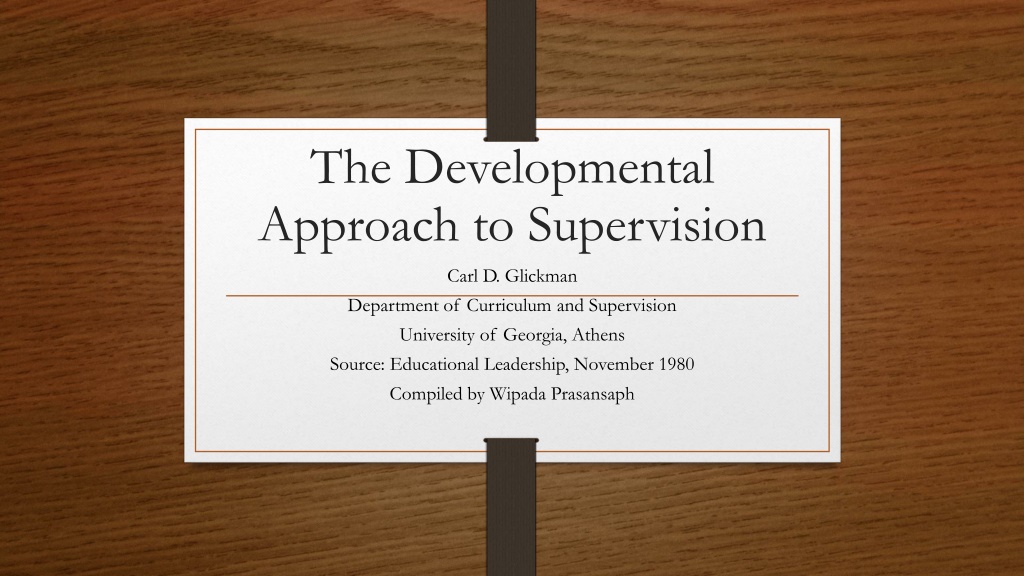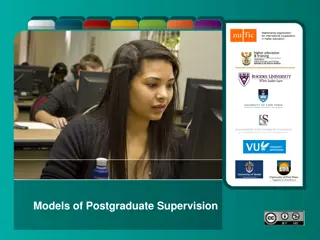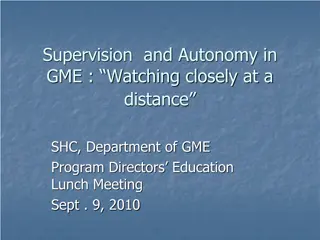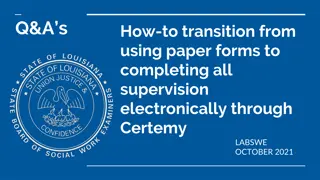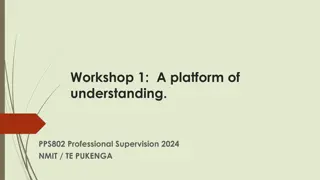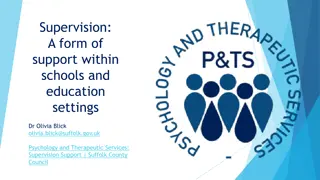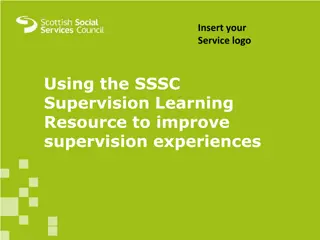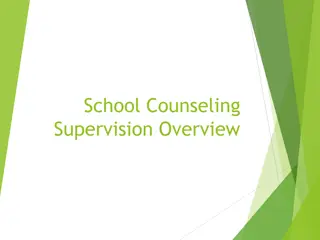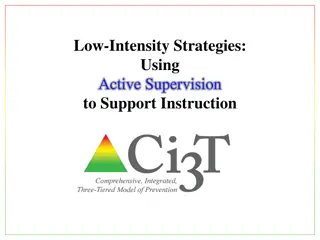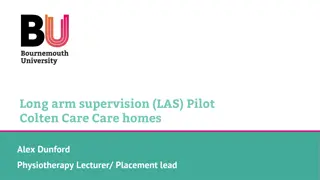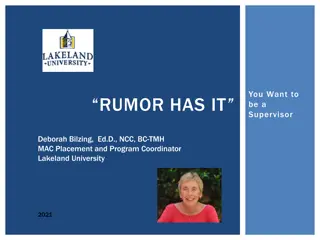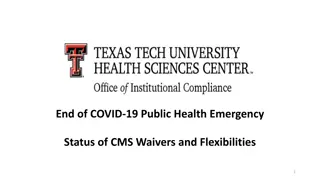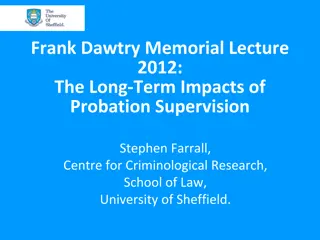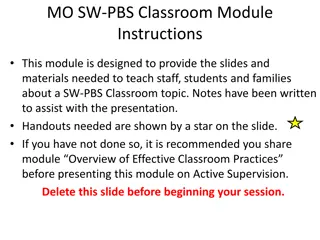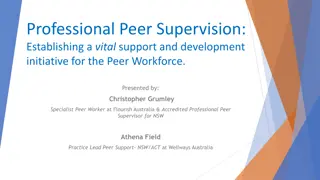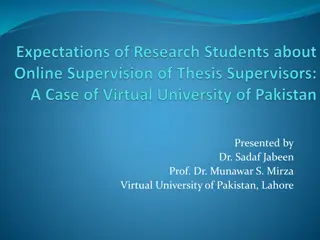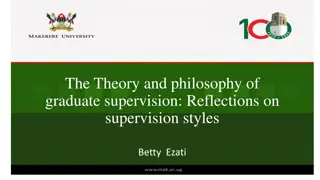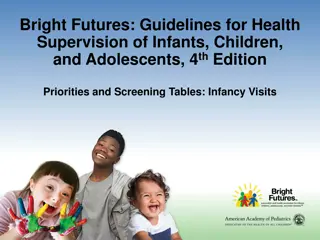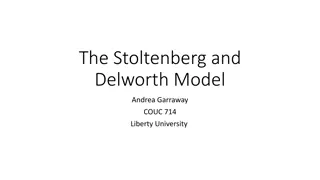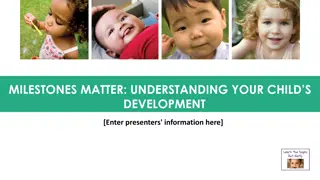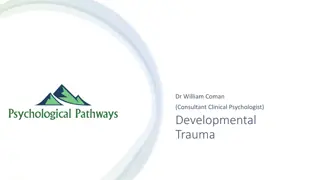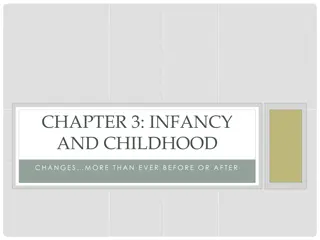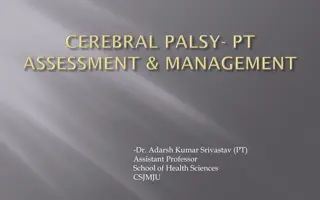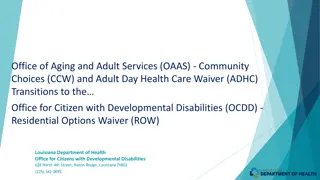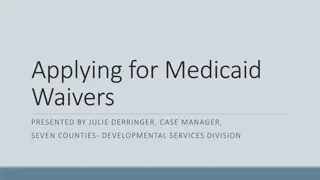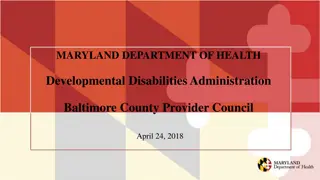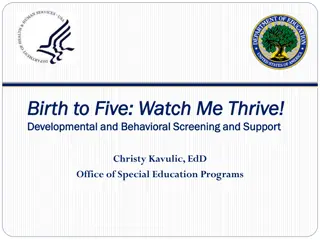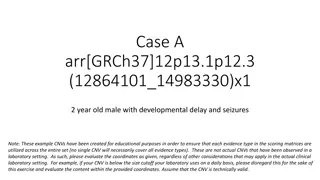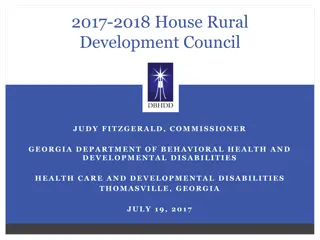Understanding Developmental Approach to Supervision in Teaching
The Developmental Approach to Supervision by Carl D. Glickman emphasizes recognizing teachers' professional development stages and treating them as individuals. Through case studies, it showcases how teachers at different stages react to in-service sessions, highlighting the importance of understanding varying teacher needs and perceptions within a school setting.
Download Presentation

Please find below an Image/Link to download the presentation.
The content on the website is provided AS IS for your information and personal use only. It may not be sold, licensed, or shared on other websites without obtaining consent from the author. Download presentation by click this link. If you encounter any issues during the download, it is possible that the publisher has removed the file from their server.
E N D
Presentation Transcript
The Developmental Approach to Supervision Carl D. Glickman Department of Curriculum and Supervision University of Georgia, Athens Source: Educational Leadership, November 1980 Compiled by Wipada Prasansaph
Supervisors should Recognize stages of professional development and treat teachers as individuals.
Case 1 Jean Sorrel is a third-year teacher at Highton School. She is young and enthusiastic, constantly involved with her students, providing activities and materials, and asking teachers for ideas.
Case 2 Regina Norton has begun her eighth year at Highton School. Students, parents, and faculty see her as a stalwart, committed, and exceptional teacher. Other teachers come to her often for advice, and she goes out of her ways to help others.
Case 3 George Halson is also a third-year at Highton School. He often appears confused about how to manage and organize the classroom to avoid disruption. He is quiet and stays to himself. Rarely does he initiate conversations with other staff members. At the end of the day he quickly gathers his materials and leaves for home.
Wednesday morning, the supervisor announces to the staff that Their third in-service session on new arithmetic materials will be held after school. All of the teachers know they are to attend but their reactions to the workshop are varied.
The three teachers reaction Jean Sorrell shrugs her shoulders and thinks, I hope that I can learn some new activities. George Halson frowns and thinks, Another wasted afternoon. Regina Norton thinks, I already know the materials to be explained. My time could be better spent working on the school curriculum or helping Judy with new science center.
Teachers within the same school have different perceptions of what is useful to them. Human beings do not think alike.
Models of Supervision Nondirective Models advocate that the supervisor be a listener, nonjudgmental clarifier, and encourager of teacher decision. Collaborative Models advocate that the supervisor be equal with the teacher, presenting, interacting, and contracting with mutually planned changes. Directive Models propose that the supervisor be the determiner and enforcer of standards of teacher behaviors by modelling, directing, and measuring proficiency level.
Supervisory Behavior Continuum Listening Clarifying Encouraging Presenting Interacting Counteracting Modeling Directing Measuring
How can you, as a supervisor, supervise the three teachers differently? Let s divide into six groups and discuss the way to supervise Jean (two groups), Regina (two groups), and George (two groups).
